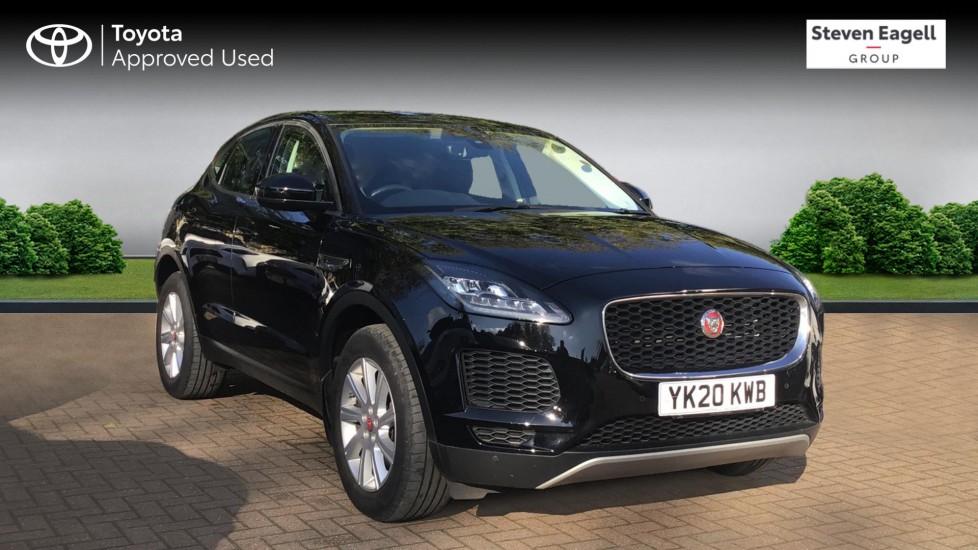Click for vehicles with £200-£700 cashback + free delivery
- Monday-Friday, 9am-5pm
- 020 3936 1257
- hey@heycar.co.uk
See what customers are saying
“Excellent”
Trustscore: 4.4/5
Copyright 2024 heycar - All rights reserved
Click for vehicles with £200-£700 cashback + free delivery

£28,499

£21,795
was
£24,099
£800 offwas
£22,199
£800 off£34,697
£20,100
£17,086
£26,662
£26,791
£26,662
£18,590
£27,490
£31,445
£25,420
£19,610
£43,202
£20,999
£35,371
1-18 of 300 vehicles
Jaguar was late to the party with its small SUV. While the Range Rover Evoque launched in 2011, the Jaguar E-Pace, despite being similar under the skin, took another five years to appear. That it fell short of rivals in several areas didn’t help its cause, but it still became a best-seller for Jaguar anyway.
Jaguar improved the E-Pace in 2021, with a better ride and handling balance, higher interior quality, tweaks to the in-car tech, and the addition of a plug-in hybrid model. It’s still not one of our favourite premium SUVs, but still worth a look if you’re tired of the usual German options in this class.
Still, we’d be remiss not to mention those German options, which include the BMW X1 and X2, Mercedes GLA and GLB, and the Audi Q3 - or, depending on your budget, slightly older versions of their larger siblings. The Range Rover Evoque is another obvious choice, and the Volvo XC40 a slightly less obvious but quietly stylish option.
It’s difficult to make a case for the E-Pace if you’re looking at a pre-2021 model. While it’s far from being a bad car, it’s certainly not as accomplished as a Jaguar should be, and in many ways, doesn’t feel much like a Jaguar - the handling is nothing special, the ride is jittery, the engines coarse, and the slightly squat styling doesn’t catch the eye in the same way even Jaguar’s other SUVs (the F-Pace and all-electric I-Pace) do.
Post-2021 though Jaguar did improve the E-Pace. It tweaked the handling and ride comfort, bumped up interior quality, installed a better infotainment system, and over time its four-cylinder engines have got smoother too, if still not class-leading for performance, economy or refinement.
The E-Pace gets credit for feeling roomier than the Range Rover Evoque with which it shares quite a lot of its mechanical components, though don’t be fooled by the surprisingly large boot capacity - Jaguar tends to quote its figures to the roof rather than the parcel shelf, so chop maybe a quarter off the claimed 577-litre figure and the 400-ish that results is closer to the mark.
Kit levels are high, especially in later cars, and the more upscale models start to feel like the luxury product the car purports to be. That said, even the S is well-enough equipped to suit most buyers, and its smaller wheels aid ride quality too.
We’d lean towards a Range Rover Evoque instead if you’re looking for a premium SUV from a British brand, though neither Jaguar nor Land Rover have a stellar reputation for reliability. One of the German alternatives might be a more pragmatic bet, such as the BMW X1 and X2, BMW GLA and GLB, and the Audi Q3.
A Jaguar E-Pace not for you? We've got 1000s of used cars for sale to suit all budgets and needs
We’d suggest steering clear of both the entry-level petrol (the P200) and diesel (D150). If the central tenets of a Jaguar are grace, space, and pace, then both fall a little short on the last of these, and you don’t see any great benefit in refinement or even economy by picking them over the next models up. Our choice instead would probably be a D180 with the automatic gearbox.
In terms of specification, the regular S trim is more than well enough equipped to meet the needs of most buyers, we reckon, while the 18-inch wheels are better for ride quality than the larger options, and importantly for used buyers wishing to avoid hefty VED bills, pricing that snuck under £40,000 when brand new means that you’ll avoid a surcharge - paying £180 per year rather than £570.
Jaguar has offered the E-Pace with a number of trim levels since its introduction, but more recently it streamlined these trims into S, SE, and HSE forms, each of which can then be upgraded with a sporty R-Dynamic flavour. We’ve listed the three key trims below and have specified where R-Dynamic adds extra equipment.
The Jaguar E-Pace’s dimensions are:
The Jaguar E-Pace’s boot size is:
The earliest E-Paces may just about sneak into the old CO2-based VED bands, with the 174g/km D150 manual earning the lowest annual bill of £290. You’d be better off with some of the lower-priced later cars though which, provided they cost under £40,000 when new, will set you back £180 per year. Over this list price that rises to £570, while the plug-in hybrid P300e is £10 cheaper.
An entry-level D150 with a manual gearbox starts off in group 25 out of 50, while the most potent petrol rises to group 35 and the P300e to group 42 in some trim levels. That means some E-Paces may be quite expensive to insure. That said, insurance on a BMW X2 will likely be similar, with groups between 22-42.
Read our full Jaguar E-Pace review
What is the most popular colour for Jaguar E-Pace ?
What is the most popular gearbox for Jaguar E-Pace ?
What is the most popular fuel type for Jaguar E-Pace ?
What is the most popular engine for Jaguar E-Pace ?
What is the average mileage for Jaguar E-Pace ?
23227
How many Jaguar E-Pace cars are available for sale?
300